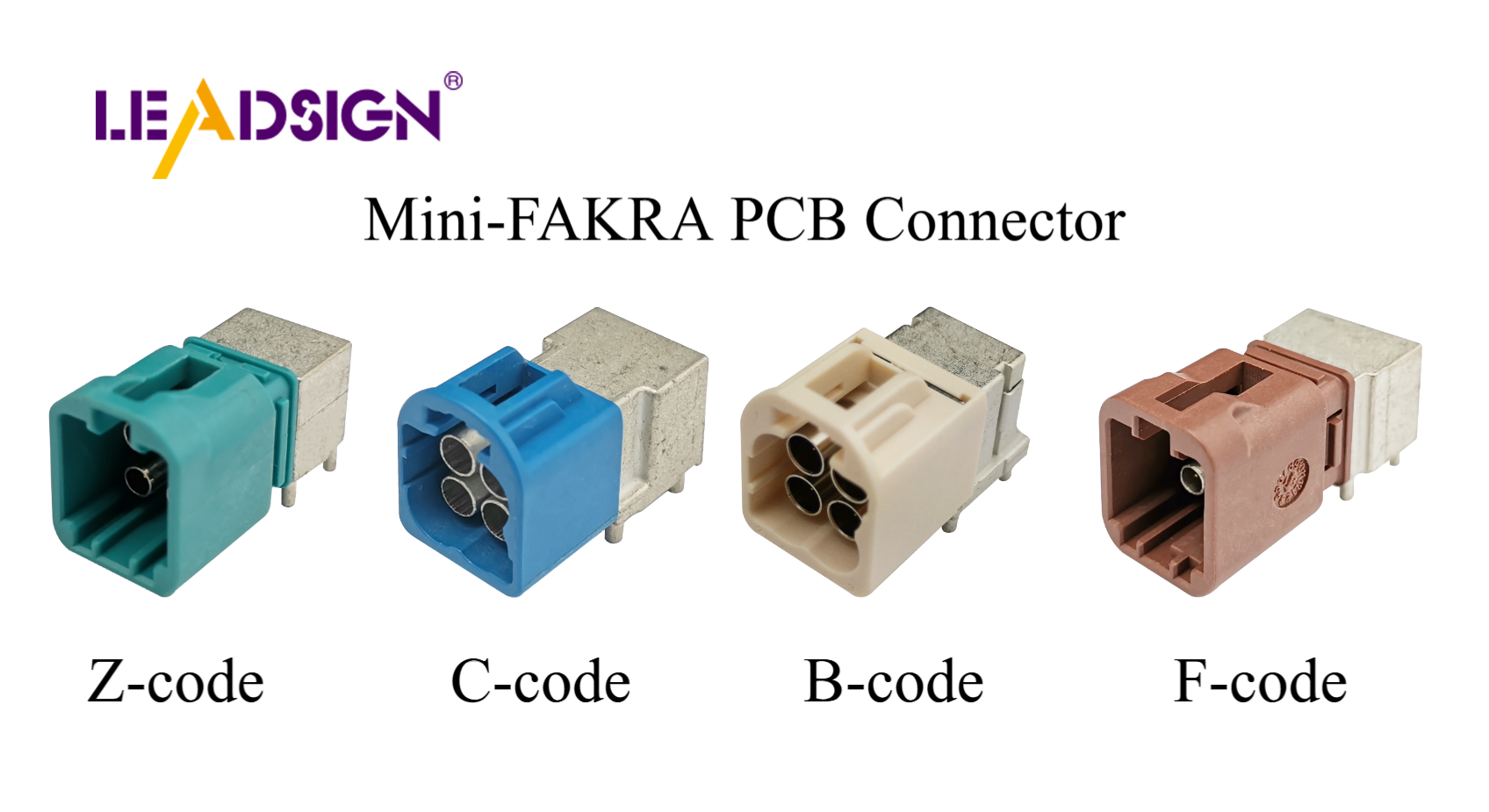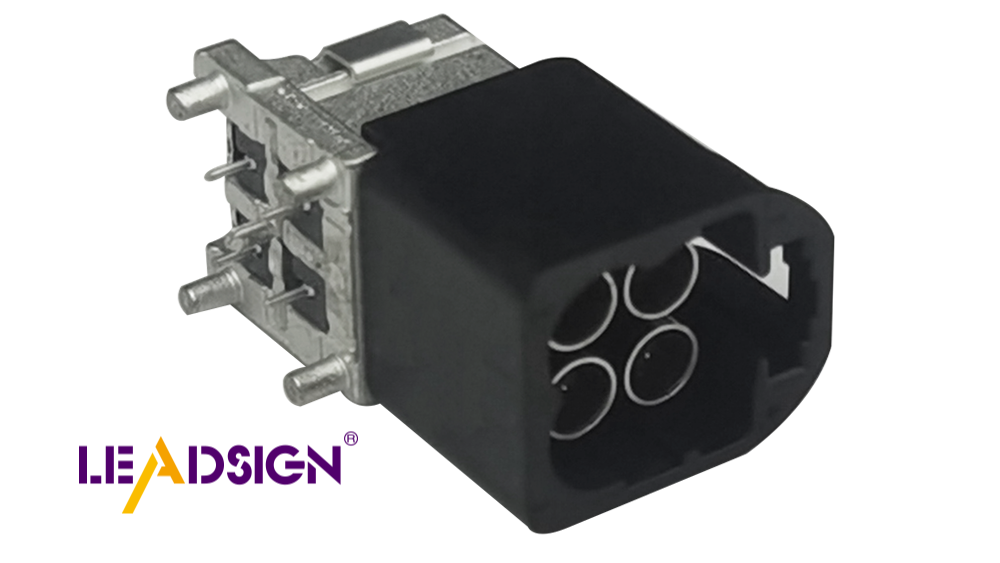Why Mini-Coax is the Future of Automotive Wiring Connector Types

Mini-coax systems change car wiring by improving data transfer with High-Speed Automotive Connectors. These fast connectors can send data at 28 Gbps speeds and work with frequencies up to 20 GHz. Their small size saves up to 80% of space, making them perfect for today’s cars. As self-driving and driver-assistance systems improve, better wiring is needed. Mini-coax connectors are light, strong, and very efficient. They use new technology to save space and weight, helping to create smarter and more connected cars.
Key Takeaways
Mini-coax connectors enable high-speed data transfer at 28 Gbps, essential for modern automotive technology.
Their compact design saves up to 80% of space and reduces weight by 75%, allowing for more efficient car designs.
These connectors are crucial for self-driving and advanced driver-assistance systems, ensuring reliable communication between sensors and cameras.
Transitioning from older FAKRA connectors to mini-coax systems enhances performance and meets the demands of new automotive features.
Mini-coax systems are built to withstand tough conditions, making them reliable for all driving environments.
Using mini-coax connectors can lead to cost savings for manufacturers due to their efficient design and easy installation.
As cars evolve, mini-coax systems will play a vital role in creating smarter, safer, and more connected vehicles.
Why Cars Need Better Wiring Systems
Why Smaller Parts Are Important
Self-driving cars and smart car systems have changed the car world. These systems need fast connectors to send data quickly between parts. As cars get smarter, smaller and better wiring is needed. Fast connectors help send data instantly for cameras, sensors, and maps.
Modern cars use many sensors, cameras, and controls. Old wiring systems can’t handle these new needs. Smaller connectors, like mini-coax systems, save space and weigh less. This makes cars work better and handle more complex systems inside.
"Mini-Coax connectors send data super fast, up to 28 Gbps." – JIT Holdings
Problems in New Car Designs
Car makers face big challenges with new car designs. Adding features like self-driving and entertainment systems needs smaller, smarter wiring. Fast connectors solve this by saving space and working well.
Making parts smaller is key for future cars. Tiny connectors, like FAKRA Mini, save 80% of space and still work great. This helps self-driving cars connect faster and more reliably.
"Self-driving systems need fast and strong connections for their tech." – Conexcon
Cars now depend on fast data sharing. Better wiring systems make cars smarter and work with new tech. As cars improve, fast connectors will be even more important for future designs.
Transition from FAKRA to Mini-Coax

Problems with Old FAKRA Connectors
FAKRA connectors have been used in cars for years. But now, they are too big and heavy for modern cars. Newer cars need smaller and lighter parts to fit advanced systems. FAKRA connectors are reliable but not efficient enough for today’s needs.
They also can’t send data fast enough for new systems. FAKRA connectors don’t work well with self-driving or driver-assistance systems. These systems need quick and strong connections for cameras and sensors. FAKRA connectors can’t handle these demands, so better options are needed.
"Old FAKRA connectors can’t keep up with modern car technology." – TechAuto Insights
Benefits of High-Speed Mini-Coax Systems
High-speed mini-coax systems fix the problems of old FAKRA connectors. They send data super fast, up to 28 Gbps, and work at 20 GHz. This helps cameras, radar, and sensors talk to each other easily.
Mini-coax systems are small and light, saving lots of space. They use 80% less space and weigh 75% less than FAKRA connectors. This lets car makers add more features without losing efficiency.
These systems are also safer and more reliable. They have features that keep connections stable, even when cars move. This is very important for self-driving and connected cars.
"Mini-coax systems are small, fast, and very reliable." – AutoTech Review
Switching to mini-coax systems is a big step for car wiring. They send data quickly, support new car tech, and help make smarter designs. Mini-coax connectors are the future of car wiring solutions.
Key Features of Mini-Coax Systems
Technical Specifications
Mini-coax systems work very well with advanced features. They handle frequencies up to 20 GHz for smooth data flow. These connectors send data at speeds of 28 Gbps. This helps cameras, sensors, and maps share information quickly. It ensures cars can manage the need for fast data sharing.
They follow strict car industry rules to meet high standards. This makes them work well with different car models. Their smart design makes it easy to fit them into complex systems. This helps cars use real-time data for self-driving and safety features.
"Mini-coax connectors are fast and very dependable." – AutoTech Review
Design Efficiency
Mini-coax systems are small and strong, saving lots of space. They cut installation space by up to 80%, helping car makers. The 4-port High-Speed FAKRA Mini (HSFM) option saves 48% of PCB space. This means smaller connections without losing performance.
They are made using cost-saving methods like stamping and automation. This keeps quality high and costs low for car makers. These connectors are light and tough, reducing car weight. Lighter cars use less fuel and are better for the environment.
"Mini-coax combines small size with fast data sharing." – JIT Holdings
Mini-coax systems are a big step forward in car wiring. They give strong connections, fast data sharing, and smart designs. As cars improve, these connectors will be key to future technology.
Uses in Future Car Technology
Helping Advanced Car Systems
Mini-coax connectors are key for advanced car technology. They send data quickly between cameras, sensors, and maps. These connectors transfer data at 28 Gbps, making cars safer. For example, maps use them to give real-time directions. Cameras and sensors use them to spot dangers and improve safety.
Self-driving cars need fast systems like radars and LiDAR. Mini-coax connectors work at 20 GHz to connect these parts. This is important for self-driving and safety systems. These systems need to be precise and dependable.
"Mini-coax connectors provide speed and dependability for modern car tech." – AutoTech Review
Using mini-coax systems helps car makers build better and smarter cars.
Role in Future Car Networks
Mini-coax connectors change how car networks are designed. They work well with Automotive Ethernet and in-car networks. Automotive Ethernet moves data fast, and mini-coax makes it even better. This helps connect all the systems in a car.
Modern cars use powerful computers and backup systems. These need strong and fast data connections. Mini-coax connectors are small and light, saving space and weight. They help computers handle data from cameras, sensors, and radars. Backup systems also stay stable and safe with mini-coax.
"Mini-coax connectors fit perfectly into advanced car networks." – JIT Holdings
As cars improve, mini-coax connectors will help make them smarter and safer.
Mini-Coax systems improve car wiring with great speed and efficiency. They send data very fast, up to 28 Gbps, and work at 20 GHz. This helps advanced car systems communicate without problems. These connectors are small, saving 80% of space and cutting weight by 75%. This makes them perfect for today’s car designs.
"Mini-Coax connectors meet the need for fast car technology." – AutoTech Review
As cars get smarter, Mini-Coax systems will stay important. They help make vehicles safer, smarter, and more connected. This makes them the future of car wiring solutions.
FAQ
What are Mini-Coax systems and how are they used in cars?
Mini-Coax systems, like the Rosenberger HFM®, are advanced car wiring tools. They handle frequencies up to 20 GHz and send data at 28 Gbps. Their small and light design saves space and costs less. These connectors are used in self-driving cars, safety systems, entertainment, and maps.
How are Mini-Coax connectors better than FAKRA connectors?
Mini-Coax connectors are much smaller and lighter than FAKRA ones. They save 80% of space and cut weight by 75%. They also send data faster and work with higher frequencies. This makes them great for cameras, sensors, and radars in modern cars.
Why do self-driving cars need Mini-Coax systems?
Self-driving cars need fast data sharing between cameras, LiDAR, and radars. Mini-Coax systems make this possible with quick and steady connections. They work at 20 GHz, ensuring smooth communication for safe and reliable driving.
What makes Mini-Coax systems special?
Mini-Coax systems have unique features like 50 Ω impedance and 20 GHz frequency support. They send data at 28 Gbps, making them strong and reliable. These features help them meet the needs of modern car designs.
How do Mini-Coax connectors improve car designs?
Mini-Coax connectors are small and strong, saving space in cars. They cut PCB space by 48% with options like the 4-port HSFM. Their lightweight design lets car makers add more features without making cars heavier.
Can Mini-Coax systems work with Automotive Ethernet?
Yes, Mini-Coax systems work well with Automotive Ethernet. This helps connect car networks for fast and steady data sharing. They support powerful computers and backup systems in modern cars.
Why are Mini-Coax systems affordable?
Mini-Coax systems are made using smart methods like stamping and automation. These processes keep quality high and costs low. Their simple design also makes them easy to install, saving money for car makers.
Can Mini-Coax systems handle tough car conditions?
Mini-Coax systems are built to last in hard car environments. They stay strong and connected even with vibrations and extreme heat or cold. This makes them reliable for all driving situations.
How do Mini-Coax connectors make cars safer?
Mini-Coax connectors help cars stay safe by sharing data quickly. They connect sensors, cameras, and controls for systems like ADAS. This helps cars spot dangers and react in time to avoid accidents.
How do Mini-Coax systems help future car technology?
Mini-Coax systems are key for new car tech like smart cars and advanced maps. They provide fast and steady connections for these features. Their ability to grow with new standards makes them perfect for future cars.
See Also
Why Quad Mini Fakra Connectors Matter in Cars
Significance of FAKRA Coaxial Cables in Vehicle Use
Exploring Benefits of Mini Fakra Connectors for Vehicles
Discovering Mini Fakra Connectors' Benefits in Automotive Systems

